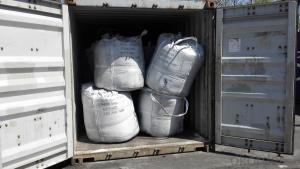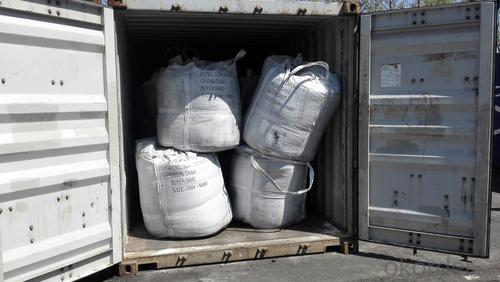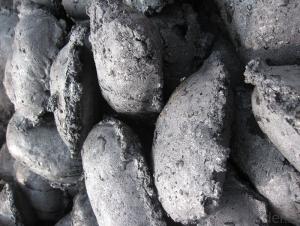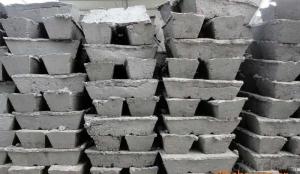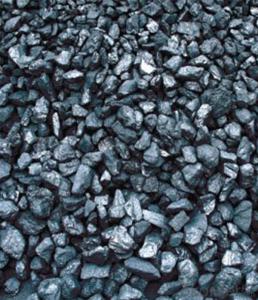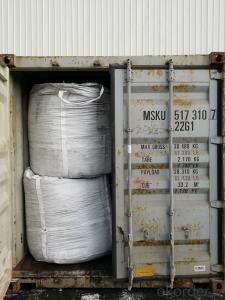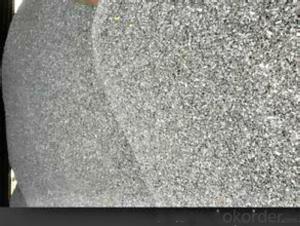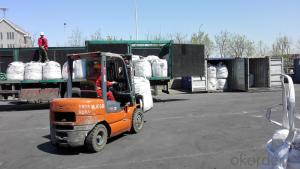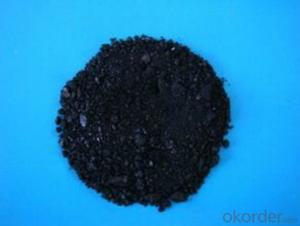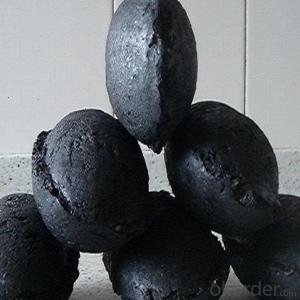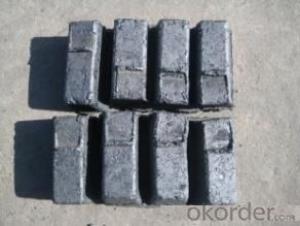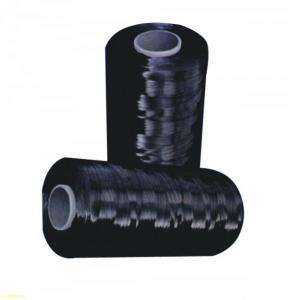S0.5% Carbon additive with Ash 4%max size 10-40MM
- Loading Port:
- Tianjin
- Payment Terms:
- TT OR LC
- Min Order Qty:
- 20.6
- Supply Capability:
- 1006 m.t./month
OKorder Service Pledge
OKorder Financial Service
You Might Also Like
Introduction:
Calcined anthracite can be called carbon additive, carbon raiser, recarburizer, injection coke, charging coke, gas calcined anthracite. We sincerely welcome clients to visit our factory
Best quality Anthracite as raw materials through high temperature calcined at over 2000℃ by the DC electric calciner with results in eliminating the moisture and volatile matter from Anthracite efficiently, We sincerely welcome clients to visit our factoryimproving the density and the electric conductivity and strengthening the mechanical strength and anti-oxidation. It has good characteristics with low ash, low resistivity, low sulphur, high carbon and high density. It is the best material for high quality carbon products. It is used as carbon additive in steel industry or fuel.
Features:
G-High Calcined Anthracite is produced when Anthracite is calcined under the temperature of 1240°C in vertical shaft furnaces. G-High Calcined Anthracite is mainly used in electric steel ovens, water filtering, rust removal in shipbuilding and production of carbon material.
Specifications:
F.C.% | 95MIN | 94MIN | 93MIN | 92MIN | 90MIN | 85MIN | 84MIN |
ASH % | 4MAX | 5MAX | 6 MAX | 6.5MAX | 8.5MAX | 12MAX | 13MAX |
V.M.% | 1 MAX | 1MAX | 1.0MAX | 1.5MAX | 1.5MAX | 3 MAX | 3 MAX |
SULFUR % | 0.3MAX | 0.3MAX | 0.3MAX | 0.35MAX | 0.35MAX | 0.5MAX | 0.5MAX |
MOISTURE % | 0.5MAX | 0.5MAX | 0.5MAX | 0.5MAX | 0.5MAX | 1MAX | 1MAX |
Pictures
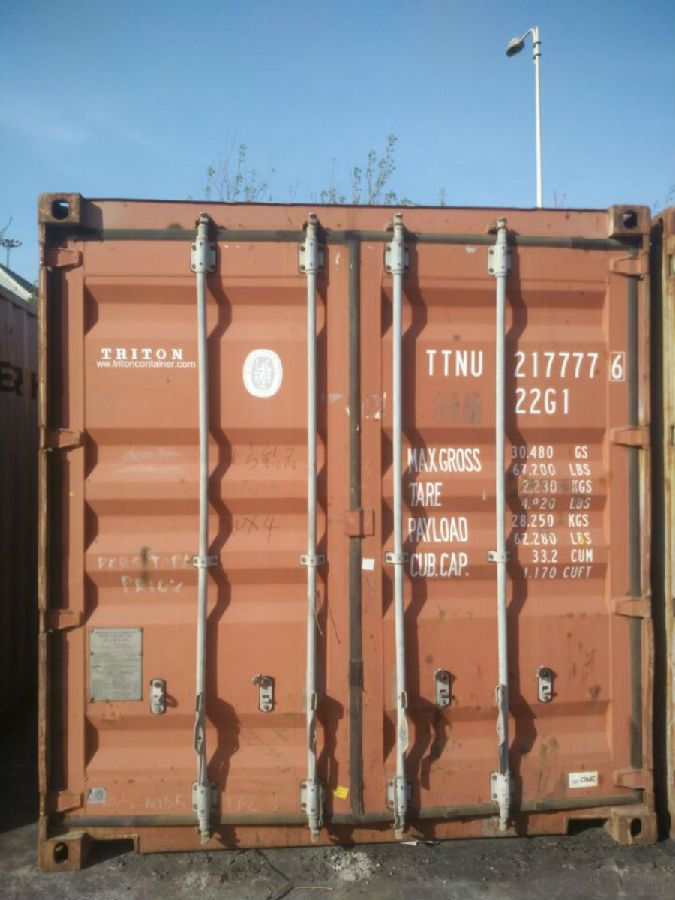
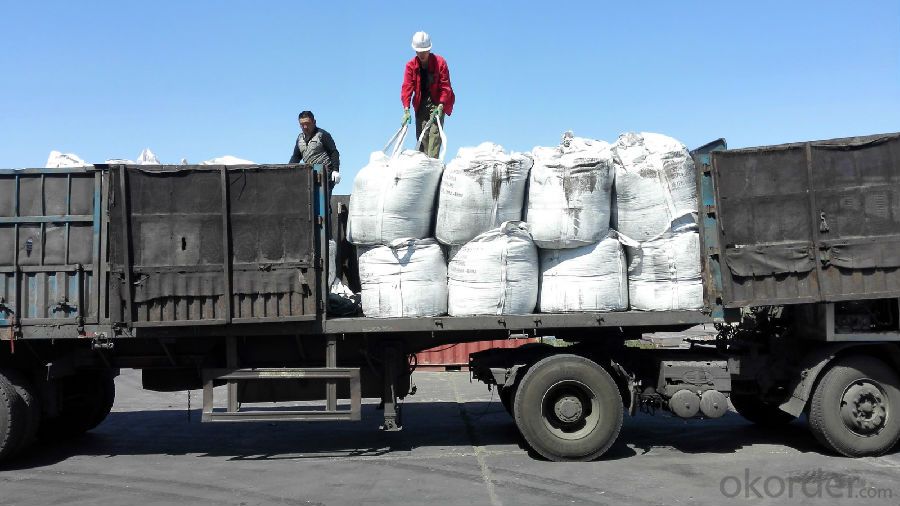
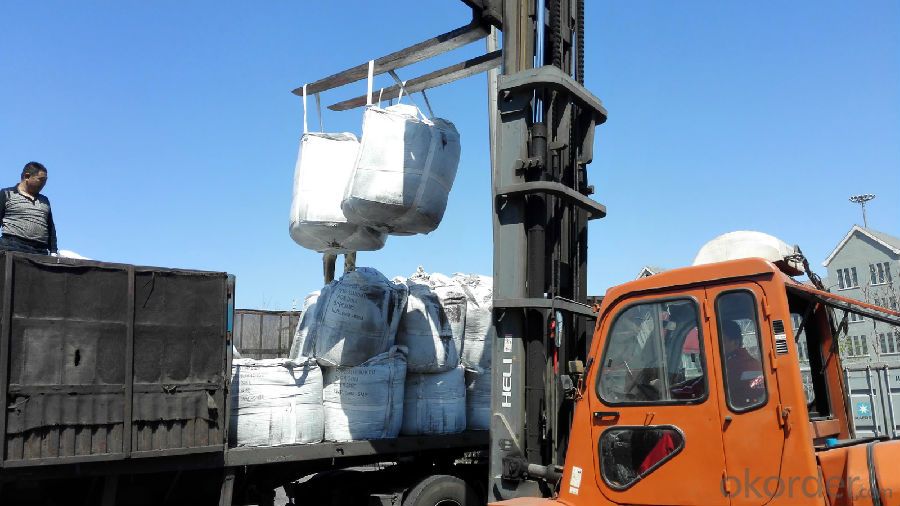
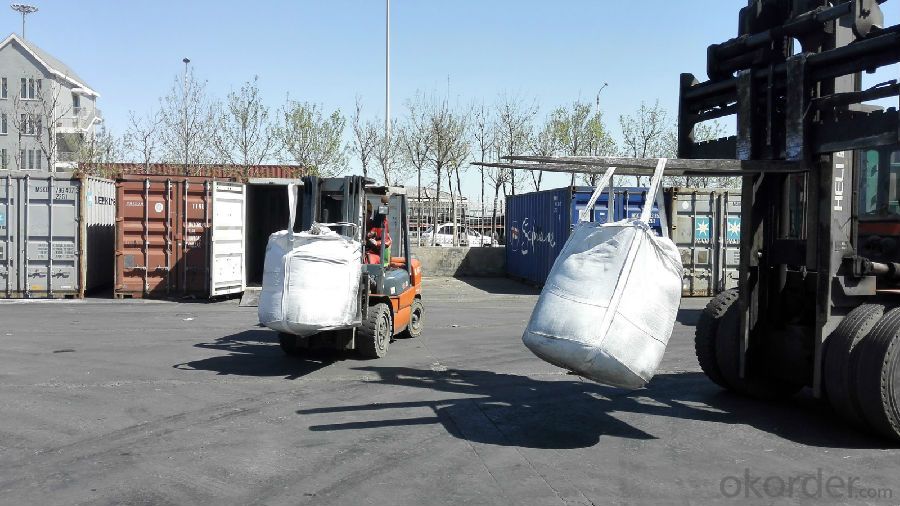
FAQ:
Packing:
(1). Waterproof jumbo bags: 800kgs~1100kgs/ bag according to different grain sizes;
(2). Waterproof PP woven bags / Paper bags: 5kg / 7.5kg / 12.5kg / 20kg / 25kg / 30kg / 50kg small bags;
(3). Small bags into jumbo bags: waterproof PP woven bags / paper bags in 800kg ~1100kg jumbo bags.
Payment terms
20% down payment and 80% against copy of B/L.
Workable LC at sight,
- Q: What is the role of carbon in respiration?
- Carbon plays a crucial role in respiration as it is a key component of organic molecules such as glucose. During respiration, glucose is broken down in the presence of oxygen to produce energy in the form of ATP. The carbon atoms in glucose are oxidized, releasing electrons that are ultimately transferred to oxygen, forming carbon dioxide (CO2) as a byproduct. This process, known as cellular respiration, occurs in all living organisms and is essential for the production of energy needed for various cellular processes. Without carbon, respiration would not be possible, and the energy required for growth, movement, and other life-sustaining activities would not be generated. Furthermore, the carbon dioxide produced during respiration is released into the atmosphere and serves as a crucial component of the carbon cycle, contributing to the regulation of Earth's climate and the growth of plants through photosynthesis.
- Q: What are the environmental impacts of carbon emissions?
- The environmental impacts of carbon emissions include climate change, air pollution, ocean acidification, and ecosystem disruptions. Carbon emissions contribute to the greenhouse effect, leading to global warming and climate change. This results in more frequent and intense extreme weather events such as hurricanes, droughts, and heatwaves. Additionally, carbon emissions contribute to air pollution, especially in urban areas, leading to respiratory problems and other health issues. Increased carbon dioxide in the atmosphere also leads to ocean acidification, threatening marine life and coral reefs. Finally, carbon emissions disrupt ecosystems by altering the natural balance of carbon cycles and causing habitat loss for many species.
- Q: How is carbon used in the agricultural industry?
- Carbon is used in the agricultural industry in various ways. One of the main uses is as a fertilizer in the form of organic matter, such as compost or manure, which improves soil fertility and structure. Carbon is also used in carbon sequestration practices, where plants absorb carbon dioxide from the atmosphere and store it in the soil, helping to mitigate climate change. Additionally, carbon-based pesticides and herbicides are used to control pests and weeds in crop production. Overall, carbon plays a significant role in promoting sustainable and efficient agricultural practices.
- Q: What are the properties of carbon-based textiles?
- Carbon-based textiles have a number of unique properties that make them advantageous in various applications. Firstly, carbon-based textiles exhibit exceptional strength and durability. They are known for their high tensile strength, making them resistant to stretching and tearing. This property allows carbon textiles to withstand harsh conditions and maintain their integrity over time. Secondly, carbon-based textiles possess excellent thermal conductivity. They can efficiently conduct heat, making them suitable for applications that require effective heat management. This property is particularly useful in industries such as aerospace, automotive, and electronics, where heat dissipation is essential to prevent system failures. Furthermore, carbon textiles are highly resistant to chemical corrosion. They can withstand exposure to various chemicals, acids, and solvents without losing their structural integrity. This property makes carbon-based textiles ideal for applications in the chemical industry, where exposure to corrosive substances is common. Another notable property of carbon textiles is their inherent flame resistance. They have a high resistance to ignition and do not propagate flames easily. This characteristic makes them suitable for use in environments where fire safety is crucial, such as in protective clothing for firefighters and military personnel. Carbon-based textiles also exhibit good electrical conductivity, making them suitable for applications in electronics and electrical engineering. They can effectively conduct electricity and dissipate static charges, reducing the risk of electrical malfunctions or damage. Lastly, carbon textiles have a low coefficient of thermal expansion, meaning they do not expand or contract significantly with changes in temperature. This property makes them dimensionally stable, ensuring that they maintain their shape and size under varying thermal conditions. In summary, carbon-based textiles possess a combination of strength, durability, thermal conductivity, chemical resistance, flame resistance, electrical conductivity, and dimensional stability. These properties make them highly versatile and suitable for a wide range of applications in various industries.
- Q: What is carbon fiber reinforced plastic?
- Carbon fiber reinforced plastic (CFRP) is a composite material made up of carbon fibers embedded in a polymer matrix, typically epoxy resin. It combines the lightweight and high strength properties of carbon fibers with the versatility and durability of plastic. CFRP is widely used in various industries, including aerospace, automotive, and sports, due to its exceptional strength-to-weight ratio, resistance to corrosion, and excellent stiffness.
- Q: How does carbon impact the stability of ecosystems?
- Carbon is a crucial element that plays a significant role in the stability of ecosystems. It impacts ecosystems in various ways, both directly and indirectly. Firstly, carbon is an essential component of all living organisms. It is a key building block of organic molecules such as carbohydrates, proteins, and lipids, which are vital for the growth and development of plants and animals. Carbon is the primary source of energy for organisms through the process of photosynthesis, where plants convert carbon dioxide into glucose. This energy is then passed on through the food chain, sustaining the entire ecosystem. Therefore, the availability of carbon directly influences the productivity and stability of ecosystems. Furthermore, carbon dioxide (CO2) is a greenhouse gas that is naturally present in the Earth's atmosphere. It plays a crucial role in regulating the Earth's temperature by trapping heat and preventing it from escaping into space. However, human activities, particularly the burning of fossil fuels, have significantly increased the concentration of CO2 in the atmosphere, leading to a phenomenon known as global warming. This rapid increase in carbon emissions has resulted in climate change, which has severe consequences for ecosystems. Climate change impacts ecosystems in various ways. Rising temperatures affect the distribution and behavior of species, altering their habitats and migration patterns. As a result, some species may struggle to adapt, leading to imbalances in predator-prey relationships and disruptions in the overall biodiversity of ecosystems. Additionally, climate change can cause extreme weather events such as hurricanes, droughts, and floods, which can have devastating effects on ecosystems. These events can disrupt the availability of resources, destroy habitats, and even lead to the extinction of certain species. Furthermore, increased carbon dioxide levels in the atmosphere have also led to ocean acidification. When CO2 dissolves in seawater, it forms carbonic acid, which lowers the pH of the ocean. This acidification has adverse effects on marine organisms such as corals, shellfish, and other calcifying organisms that rely on calcium carbonate to build their shells or skeletons. The reduced availability of carbonate ions in the ocean makes it harder for these organisms to form and maintain their structures, ultimately impacting the stability of marine ecosystems. In conclusion, carbon has a significant impact on the stability of ecosystems. Its availability and concentration directly affect the productivity and energy flow within ecosystems. Moreover, human-induced carbon emissions have led to climate change and ocean acidification, which pose severe threats to the balance and functioning of ecosystems. Therefore, understanding and managing carbon levels in the environment is crucial for maintaining the stability and sustainability of ecosystems.
- Q: How does carbon impact the prevalence of avalanches?
- Carbon does not directly impact the prevalence of avalanches. The occurrence of avalanches is mainly influenced by factors such as snow conditions, slope steepness, and weather patterns. However, carbon emissions and climate change can indirectly contribute to increased avalanche risks by influencing snowpack stability and altering weather patterns, which can lead to more frequent and severe avalanches.
- Q: How does carbon monoxide affect human health?
- Human health can be severely impacted by carbon monoxide, a highly toxic gas. When we breathe it in, carbon monoxide enters our bloodstream and binds with hemoglobin, the molecule responsible for delivering oxygen to our cells. This binding is incredibly strong and hampers the effective delivery of oxygen, resulting in a condition known as carboxyhemoglobinemia. The symptoms of carbon monoxide poisoning can vary depending on the concentration and duration of exposure. Initially, individuals may experience mild symptoms like headaches, fatigue, dizziness, and nausea. However, if exposure continues or occurs at higher concentrations, these symptoms can escalate to confusion, impaired judgment, loss of consciousness, and even death. One of the most dangerous aspects of carbon monoxide is its ability to go unnoticed, as it lacks color, odor, and taste. This makes it difficult to detect its presence without proper monitoring equipment. Carbon monoxide poisoning can arise from various sources, including faulty heating systems, poorly ventilated appliances, and running engines in enclosed spaces. Prolonged or repeated exposure to carbon monoxide can result in long-term health consequences. It can lead to neurological damage, memory loss, cognitive impairment, and even permanent brain damage. Additionally, it can worsen existing cardiovascular conditions, increasing the chances of heart attacks and strokes. To safeguard ourselves from carbon monoxide poisoning, it is crucial to ensure proper ventilation and functional carbon monoxide detectors in our homes and workplaces. Regular maintenance of appliances and heating systems is also essential to minimize the risk of leaks. Recognizing the symptoms of carbon monoxide poisoning and seeking immediate medical attention are vital in preventing severe health outcomes.
- Q: How does carbon affect the electrical conductivity of materials?
- The electrical conductivity of materials can be significantly affected by carbon due to its unique electronic properties. Carbon atoms can form various allotropes, including graphite, diamond, and fullerenes, each having distinct electrical conductive properties. Take graphite, for example. It consists of carbon atoms arranged in a hexagonal lattice structure, forming strong covalent bonds within each layer. However, weak van der Waals forces exist between the layers, allowing electrons to move easily in the plane of the layers. This delocalization of electrons in graphite contributes to its high electrical conductivity, as the free electrons can move freely and carry electrical charges. On the other hand, diamond, another form of carbon, has a three-dimensional covalent network structure. Each carbon atom forms four strong covalent bonds with neighboring atoms, resulting in a highly rigid and stable lattice. The absence of free electrons in diamond restricts the movement of electrical charges, making it an insulator. The electrical conductivity of fullerenes, which are spherical carbon molecules, can vary depending on their structure. Some fullerenes can act as semiconductors, meaning their electrical conductivity can be controlled by introducing impurities or applying external stimuli. Furthermore, carbon can be used as a dopant in certain materials to enhance their electrical conductivity. For instance, adding small amounts of carbon to silicon can improve its electrical conductivity, making it suitable for electronic devices. In conclusion, carbon's impact on electrical conductivity relies heavily on its structure and arrangement within a material. Understanding the different forms and properties of carbon allows engineers and scientists to design materials with desired electrical conductive characteristics for various applications.
- Q: What is the role of carbon in organic chemistry?
- Organic chemistry heavily relies on carbon, a fundamental element that plays a crucial role in the structure and function of organic compounds. Its exceptional ability to form stable covalent bonds with both carbon and a wide range of other elements leads to the immense diversity of organic molecules found in nature. Carbon's capacity to bond with itself and other elements allows for the creation of long chains, branched structures, and ring systems, resulting in the complex and distinctive shapes characteristic of organic compounds. In the realm of organic chemistry, carbon acts as the foundation for many vital biomolecules essential for life, such as carbohydrates, lipids, proteins, and nucleic acids. It serves as the basis for the structural variety and intricacy observed in living organisms. Additionally, carbon's ability to form multiple bonds and its tetrahedral geometry contribute to the versatility of organic compounds, enabling the presence of various functional groups like hydroxyl, carbonyl, amino, and carboxyl groups. Moreover, carbon's aptitude for undergoing chemical reactions, including oxidation, reduction, addition, substitution, and elimination reactions, holds significant importance in organic chemistry. These reactions are fundamental for synthesizing and modifying organic compounds, facilitating the creation of new molecules with specific properties and functions. Carbon's central role in organic chemistry extends further to the study of reaction mechanisms, stereochemistry, and comprehending the behavior and reactivity of organic compounds. In summary, carbon's exceptional properties and its capacity to form stable covalent bonds with other elements serve as the cornerstone of organic chemistry. Its presence allows for the vast array of organic compounds that exist, while its participation in chemical reactions enables the synthesis and manipulation of these compounds. Without carbon, the field of organic chemistry and the study of life's fundamental building blocks would be impossible.
Send your message to us
S0.5% Carbon additive with Ash 4%max size 10-40MM
- Loading Port:
- Tianjin
- Payment Terms:
- TT OR LC
- Min Order Qty:
- 20.6
- Supply Capability:
- 1006 m.t./month
OKorder Service Pledge
OKorder Financial Service
Similar products
Hot products
Hot Searches
